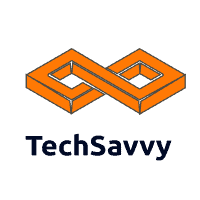[ad_1]
AI is on everyone’s minds these days. ChatGPT3 and OpenAi have brought what’s possible to the mainstream in a way we haven’t seen outside of movies before.
If you’ve spent any time following the trends online, there’s a lot of praise for what’s possible, what could be possible, and what will be possible over the next few years thanks to increasingly powerful AI tools.
But what, if anything, does that mean for you and your IT infrastructure needs?
How is AI being used in IT management?
There’s a good chance that AI is already being used to help manage your tech stack in some way, you just don’t realize it.
What we’re seeing now—the news coverage, the online banter, the predictions—is largely around OpenAI’s ChatGPT, which is a large language model (LLM) that can answer questions, create scenarios, and provide text based on the questions it’s asked by humans.
On the IT side of things, AI tools have been around for a while now. They help with everything from security to monitoring. What we’re going to be seeing over the next little while is an increase in the kinds of tools that are available and an increase in the sophistication of those tools.
Similar to the way that cybercriminals are using bots and AI to create attacks that are harder to spot and stop, cybersecurity experts are using bots and tools to keep up. Let’s explore what this is going to look like over the next little while.
How will AI impact the IT services (hint – it makes them better)
AI supplements and supports IT management in a way that makes it possible to do more, be more protected, be more productive, and maximize uptime, without having to do more work (per se). Automation is already a big feature for IT teams, using AI to help manage certain tasks or simply to remove repetitive work allows human workers to focus on big-picture tasks, like strategic deployments, that AI can’t manage. As important as these large projects can be, you can’t sacrifice the day-to-day of your company to work on them. You need to find a balance and AI can help provide that balance.
The big piece that people tend to think of when it comes to AI is automation. AI can help with tasks like process automation and data gathering in a way that people can’t. But, that’s just the tip of the iceberg. In reality, AI and IT teams work together in a way that is almost seamless, at times. AI helps with certain tasks, like monitoring, then the human IT team comes in and does the work needed. Even in instances where it seems like you can remove people entirely, like advanced threat detection, human techs are still a critical part of the picture.
Security
As we mentioned above, cyberattacks are getting more complex and sophisticated all the time. Not only that, but they’re increasing in intensity. We’re regularly reading about the next largest DDoS attacks or massive data breaches at schools, hospitals, or municipal infrastructure. If you’re not using tools that can identify and stop these attacks, you’re going to struggle to stay in business.
AI can be used to identify these attacks before they reach record-breaking levels. Security tools can now tell the difference between a user who’s forgotten their password and bots trying to access a system using genuine login credentials. Being able to separate out these kinds of incidents and respond accordingly is often the difference between keeping your business safe and ending up on the news. Once these threats have been identified, your security team can help mitigate the damage, solve the problem, and restore your business to the way it once was.
Business optimization
AI is great at being able to spot patterns, whether that’s unauthorized users trying to access your system, employees working in less than efficient ways, or your system slowing down because too many requests are going to one specific server, while others are dormant.
When these patterns are noticed, AI can then be used to find and produce solutions to these problems. In some instances, it means creating tools or bots to manage tasks (process automation) other times it could be re-routing network traffic to use all servers that are available, rather than overburdening one particular server. Afterwards, the IT team can implement these solutions based on the suggestions made by AI and modify them to better suit the needs of your business.
This can be particularly helpful during economic slowdowns, when you’re looking for ways to boost revenue, without having to lay off members of your team. On top of helping your employees work more efficiently, AI can also help identify redundancies within your network and cloud setups that could be eliminated to help save even more money.
Prototyping
It doesn’t matter what you’re looking to build. It could be a new website, it could be a bespoke piece of software that helps you work more efficiently in your business. One area where AI has shown a lot of promise lately has been with prototyping ideas and turning them into very rough drafts. A good example of this is ChatGPT recently turning a literal sketch of a website into an actual site.
What’s great about this is it lets you rapidly iterate through ideas and concepts, refinding quickly as you go until you find something that looks good. You save the hassle and expense of building each new idea and can go straight to something that works (more or less).
Predictive analytics
Similar to business optimization, AI can use the data that exists within your business to predict potential areas of concern. What this means is that AI can alert your teams of a possible failure or issue, so they can fix it before it becomes a huge problem. When it comes to technology, it’s always better to stay ahead of these issues, but when you’re actively managing a large system, some aspects can be missed. It’s the same reason AI is used for security. It’s a safety net that helps people keep your network (and business) running smoothly.
Want to work AI into your business?
If you’re wondering how AI can help your business (or how to better work with the AI that currently exists), let’s talk. Our experts have more than 20 years of experience working with teams to help them implement ways to work better and save money using AI and AI tools. We can help determine what’s best for your business, figure out how it’s going to help, and get you set up with the tools you need to run a more efficient business. Contact us today to learn more.
The post AI trends in IT management appeared first on Manhattan Tech Support.
The post AI trends in IT management appeared first on Manhattan Tech Support.
[ad_2]

